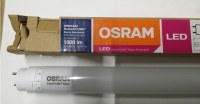Types of Thermistor FunctionThere are two main types of thermistors: NTC and PTC thermistors. Although these two are made of different materials, both can respond to temperature changes in a specific ...
Temperature Sensor
For Home Appliance
For Pellet Grill
For Food
For Instrumentation
For Pet Box & Tank
For Vehicle Electronics
For Green-car
For Fire Alarm
For Medical
For HVAC
For EV Charging Pile/Sockets/Gun
For Energy Storage
For Lithium Battery Equipment
For Food Probe/ Oven
For Coffee Pot/Kettle
For Gas Cooker
For Intelligent Electrical Monitoring
For Industrial Application
Thermistor
NTC Thermistor
RTD thermistor thermistor
Digital Thermistor
Other Sensors
Temperature And Humidity Sensor/Detector/Probe
Temperature Switc
Gas Sensor
Dust Sensor
Different Types of Thermistors
What Is A Thermistor And How Does It Work?
Thermistor definition: The resistance of ordinary resistors is little affected by temperature changes, but thermistors are completely different. Its resistance changes with temperature changes. It is a component that uses temperature to control the resistance of the resistance. A thermistor is a thermal element made of certain metal oxides according to different formulations.
Thermistor working: In a certain temperature range, the temperature change of the measured medium can be known according to the change of the resistance of the measured thermistor. The thermistor will remain inactive for a long time; when the ambient temperature and current are in zone c, the heat dissipation power of the thermistor is close to the heat power, so it may or may not operate. When the ambient temperature is the same, the action time of the thermistor is shortened sharply with the increase of the current; when the ambient temperature is relatively high, the thermistor has a shorter action time and smaller maintenance current and action current. Thermistors come in many shapes, such as spherical, rod-shaped, tube-shaped, circle-shaped, and so on.
Application Of Thermistor In Daily Life
Thermistors can be used as temperature sensors. The application of thermistor in daily life is very common for example, fire alarms, ovens and refrigerators. Thermistors are also used to measure temperature in digital thermometers, automotive applications and so on.
Types of Thermistor Function
There are mainly two types of thermistors: NTC and PTC thermistors. Although these two are made of different materials, both can respond to temperature changes in a specific method. The resistance value of a negative temperature coefficient thermistor (NTC) decreases with increasing temperature. At the beginning, the resistance of the thermistor is relatively large, and the temperature will soar after the current surges. After the current reaches the peak value, the resistance value will drop to maintain a low power consumption level. When the normal circuit current passes through the NTC thermistor, it will remain at the needed temperature level to maintain a low power consumption level. The resistance value of a positive temperature coefficient thermistor (PTC) increases with increasing temperature. This type of thermistor is often used as a direct plug-in resettable fuse. Once the Curie temperature or switching temperature is reached, the resistance value will soar quickly. Termistor ntc ptc is really an ideal choice for overcurrent conditions.
Thermistor Function
Function of Thermistor in Air Conditioner
The thermistor has two main functions in the air conditioner: to realize the automatic control of the comfort feeling of the air conditioner and protection effect, which can remain the temperature of many parts of the air conditioner at normal level and the performance will not be damaged due to excessive temperature to maintain normal operation and long service life. Air conditioners generally have two thermistors, one is set on the condenser coil for protection and defrosting temperature measurement in winter, and one is set on the surface of the evaporator for temperature control and temperature measurement.
Function of Thermistor in Battery Charging Circuit
There are generally two functions of thermistor in the battery charging circuit: one is being placed on the input end, which is connected in series after the fuse is rectified. Its function is to prevent the effect of excessive inrush current. Generally, there will be a large inrush current when the power is turned on. Excessive inrush current may damage other components. The thermistor can absorb the instantaneous inrush current and convert it into heat energy. When the circuit works normally, the thermistor becomes hot and its resistance decreases, which can be regarded as a short-circuit state and does not affect normal operation. The other function is to place the thermistor on the hot element for over-temperature protection. When the temperature is too high, the resistance of the thermistor will decrease. It will cooperate with IC control output for over-temperature protection.
As one of the most professional ntc thermistor suppliers, we provide sensor products, bbq meat temperature probe, sensor products and etc. Want to know more about thermistor function in a circuit, Please contact us.
There are many temperature transducer suppliers, but we are one of the best choices for you.
Localisation : 6F, JinXiongDa Indusry Park , GuanLan Town, LongHua District, 518055 Shenzhen,
Personne à contacter : Sen Temp, 0755 83687011







